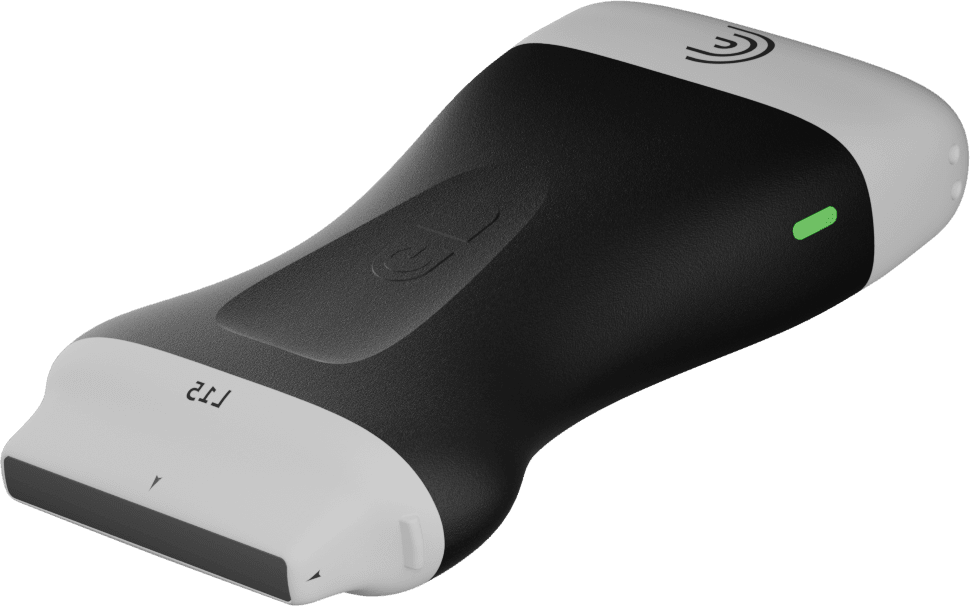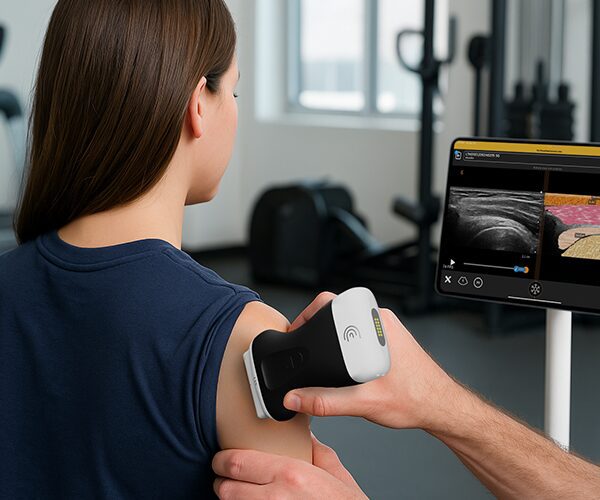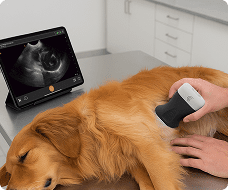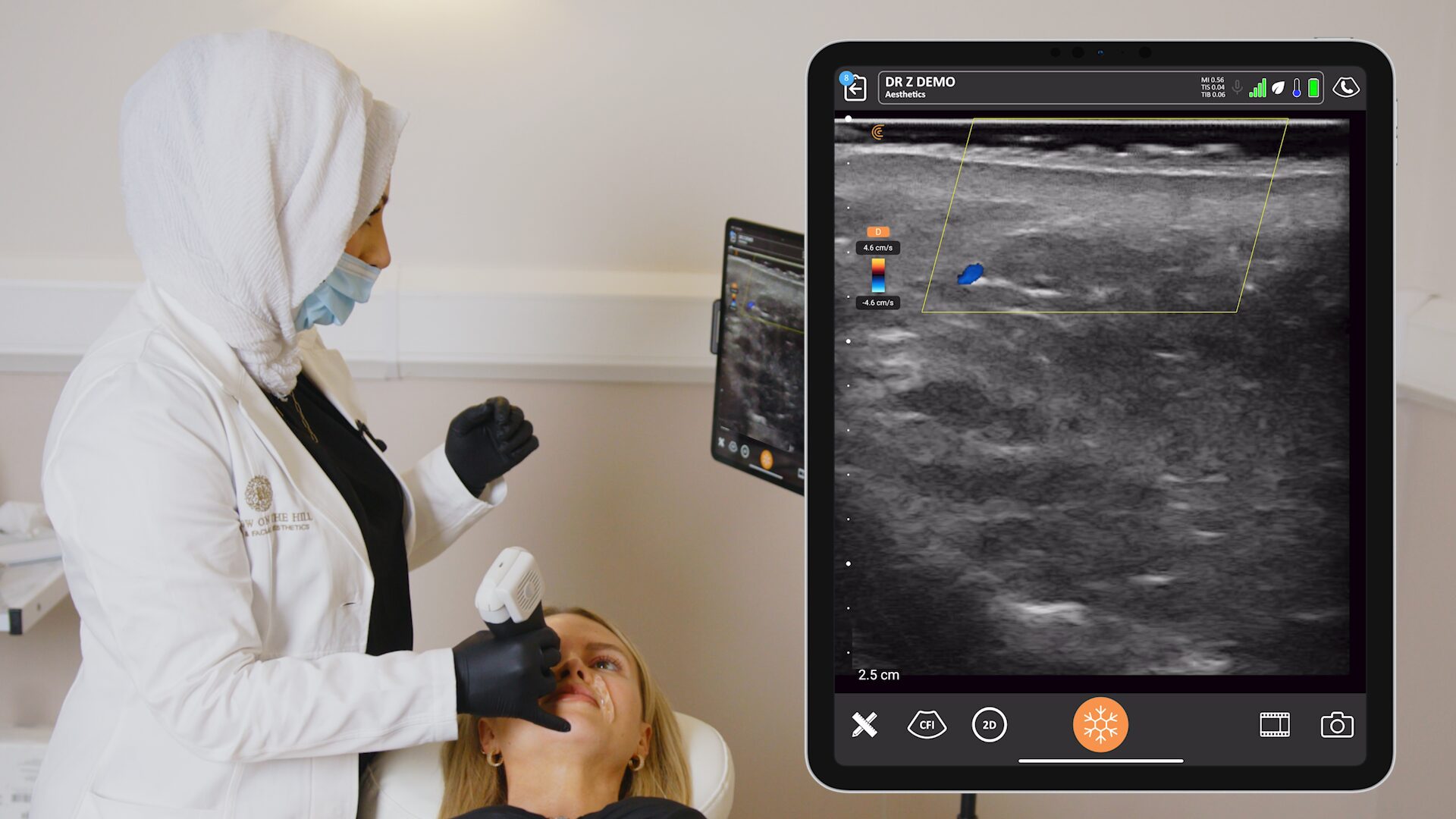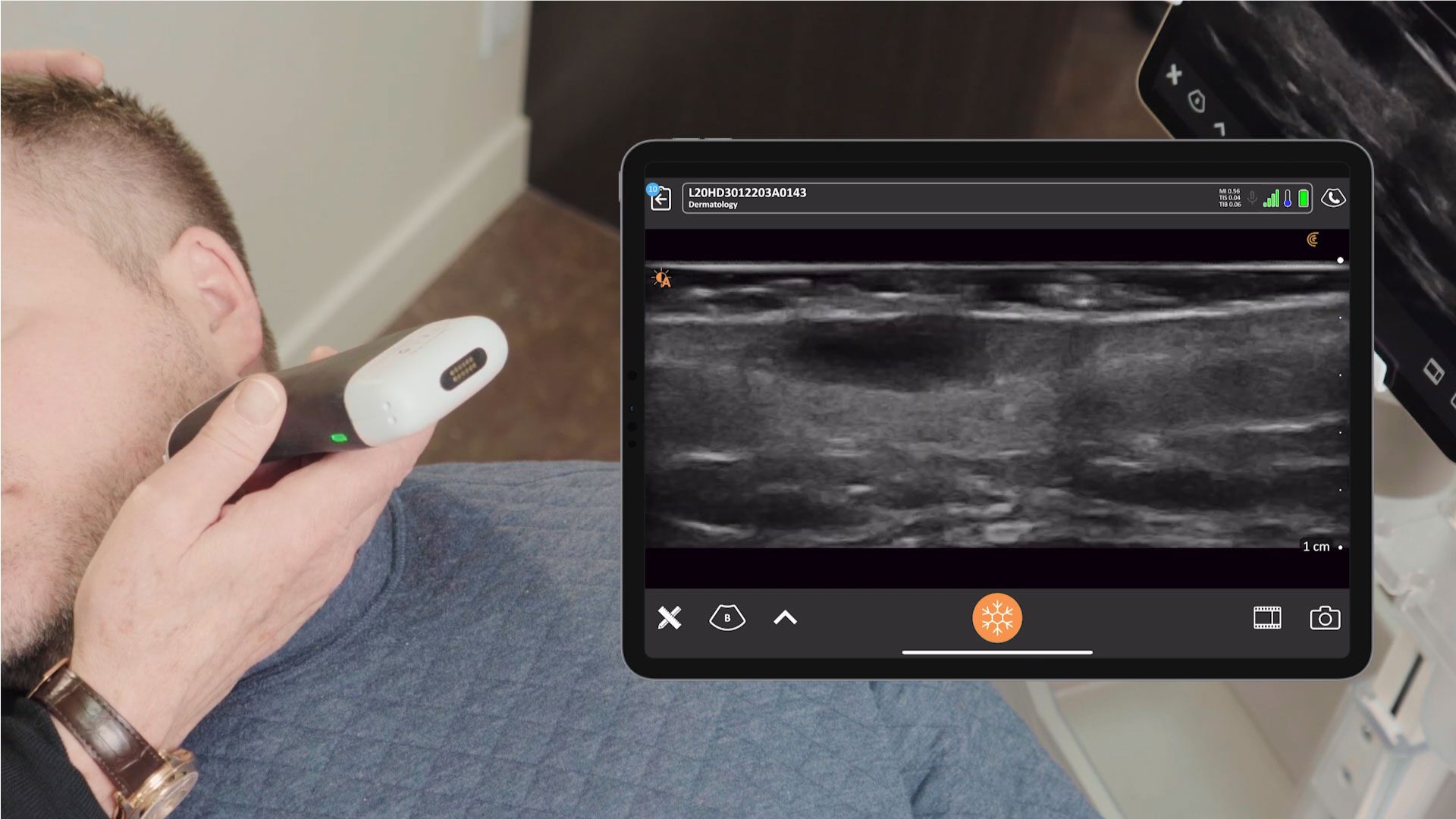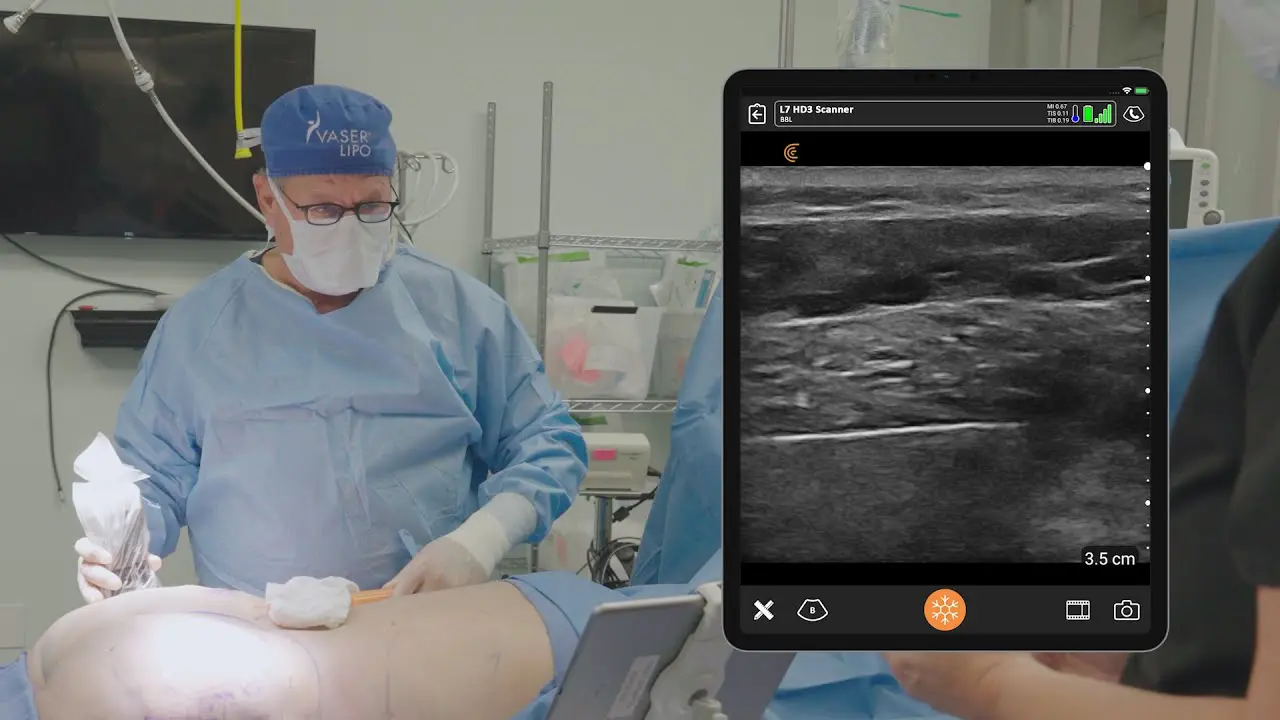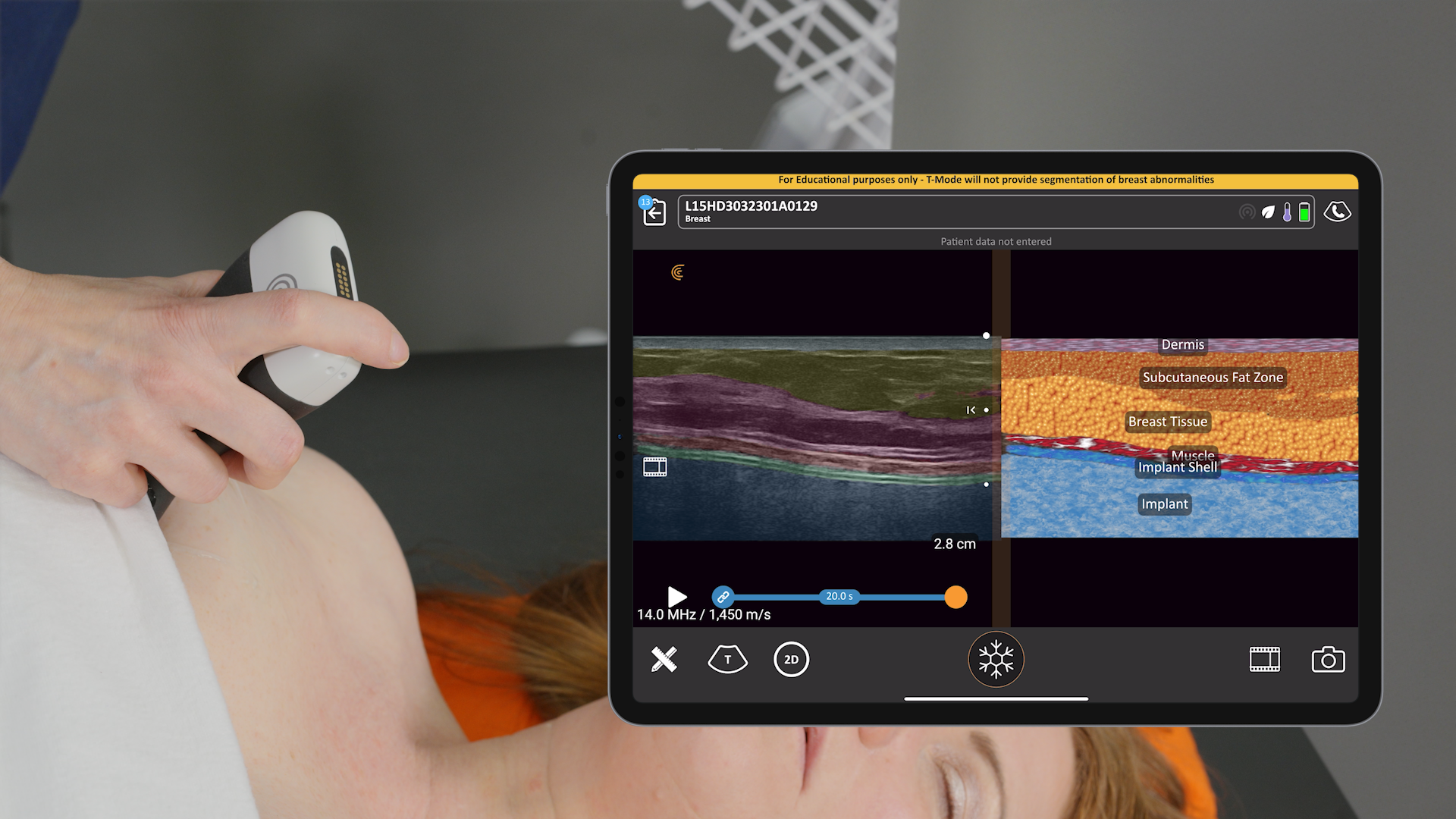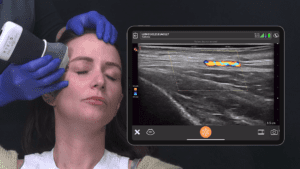Dr. Steven Weiner, a facial plastic surgeon from Santa Rosa Beach, Florida has been a proponent of ultrasound use for safer procedures in the aesthetics community since he experienced the benefits in 2019. We were delighted to have the opportunity to interview him during this year’s Aesthetics Meeting about his journey. Read on for highlights of our conversation or watch this 5 minute video.
How has your use of ultrasound evolved?
I was introduced to ultrasound when I went to Amsterdam and learned from my mentor, Leonie Schelke, and the Cutaneous group. I did that in 2019, so I’ve been using ultrasound for about five years. I use it for pre-mapping, finding where the arteries are or aren’t, prior to injecting in the temples, in the deep piriform area. And I also use it to look at patients beforehand, that have had previous fillers to see what fillers they had and where they’re placed. But I also use it a lot for complications. Swelling around the eyes, lumps and bumps, pain, discomfort. And last but not least, I use it a lot for vascular occlusions where the patient is in distress because the artery has been injected with filler. ”
When did you start using Clarius ultrasound?
I learned about the L20 in 2020 from Dr. Marc Salzman, I think he was doing a webinar. I thought it was a great tool for the average injector. It wasn’t too expensive, it was very easy to learn because a lot of the knobology, the changes in the controls were very similar to the iPhone. And it’s on an iPad and the photos are very interchangeable with your iPhone and Mac. They make it really easy for a new user. And then, obviously, with the new AI, it’s made it even easier for the person who has no experience. ”
“I didn’t have any experience using ultrasound in 2019. And yeah, it takes a long time. In fact, I’m still learning, but the Clarius kind of dumbs it down a little bit, so that almost everyone can at least use it. And in my trainings, I tell people… And I do the trainings almost exclusively with Clarius, I tell them that you’re not going to be an expert by the time this day’s over, but I can tell you you’ll be able to use the Clarius in your office by the time you’re done. And it’s an eight-hour course, and by God, most can use it.”
Any thoughts on the Clarius T-Mode AI for helping clinicians who are new to ultrasound?
The new T-Mode is really good. It’s actually very accurate, which was surprising. And it’s particularly good in the temple anatomy because there’s 10 layers of the temple and it’s very difficult for people to understand that. But with the T-Mode, you throw it on the temple and you automatically see the layers, it even labels them for you if you press the freeze button, pause button. It’s also great for lips and cheeks. So, it’s a great learning tool. I think that when you’re using it on a patient, patients love to see first, that you care about their safety, but number two, that you can teach the patient too, about the different layers. And they’re intrigued with that.”
“And you can show them abnormalities or variations in anatomy of them versus what normally exists as well. And then you can show them the filler before and after, what filler she had before and then your fillers afterwards. That’s very interesting to them and they appreciate the extra time that you take. It doesn’t take a lot of extra time, but if you have a few moments, particularly your well-educated patients or your long-term patients, they want to see that and they really understand that you have taken a lot of time and effort to learn, to purchase a device, and I think it just takes your practice to a different level. ”
What do you like best about using Clarius ultrasound?
Keeping with the iPhone type of mantra, it’s just intuitive. You want to enlarge it, you do this (pinch out), you want to change the depth, you just slide. One of the advantages that really isn’t talked about much, is that since it is very compatible with the iPad, you can do a screen recording. So instead of hooking up a whole different graphics card when I’m using some other device, you can just screen record on your iPad and you get 15, 30 minutes of recording. Let’s say you’re taking care of a guided injection of a complication, or so forth. On the other devices, without that, you only get around 15 second increments, but if you screen record, you can get 15, 30 minutes.”
“They’re also basically indestructible. You could throw it into a fish tank for 48 hours and then pull it out and use it. So that’s a pretty neat feature too. And you can wipe it with anything and you’re not going to destroy it. I’ve been carrying it around, through the airports, in my backpack, and everything has worked fine. They’re indestructible. The ones that you get in your office are much more delicate and you have to watch what you clean them with, and if you drop it, they don’t function. I haven’t dropped the Clarius, but I’m sure it would do fine.”
Watch this Free On-Demand Webinar to Learn Dr. Weiner’s Ultrasound Techniques for Safer Injections
We invite you to watch a popular webinar from our archives during which Dr. Weiner demonstrates step-by-step techniques for performing safer filler injections by using ultrasound to limit vascular complications. You’ll find the webinar here.
A renowned educator, Dr. Weiner is the founder of Sonosthetics, an ultrasound training course for aesthetic injectors. He is a board member of CMAC (Complications in Medical Aesthetics Collaborative) which educates on the prevention and management of filler complications. Dr. Weiner is also the Ultrasound Director of the Academy for Injection Anatomy, a monthly 2-day course on cadaver and ultrasound anatomy and injection techniques.
Improve Patient Safety with High-Definition Ultrasound
Dr. Weiner uses the Clarius L20 HD3 ultra-high frequency wireless handheld ultrasound scanner for facial aesthetic procedures. Designed to provide extremely high image quality in the near field, from the skin line to 4 cm, the Clarius L20 HD3 is ideal for a variety of clinical settings requiring superior superficial imaging. It is the only handheld ultrasound with ultra-high frequency of 20 MHz. Wireless and affordable, it delivers exceptional superficial imaging with an easy-to-use app for your iOS or Android device.
Learn more about Clarius AI-powered ultrasound on our aesthetics specialty page. Or contact us for a personalized virtual demonstration.
